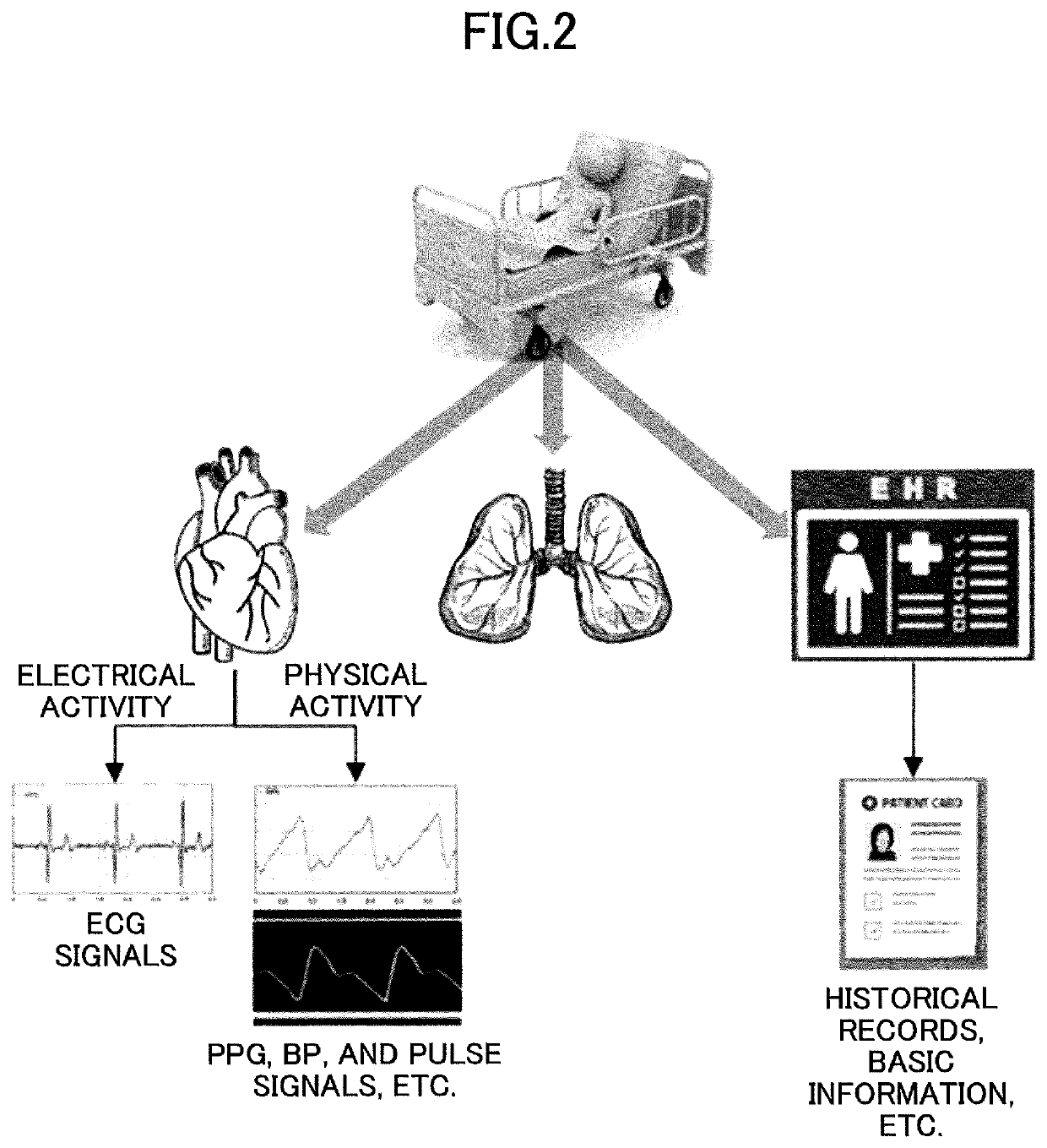Method and apparatus for processing physiological signals and non-transitory computer-readable medium
a physiological signal and computer-readable medium technology, applied in the field of biological equipment, can solve the problems of reducing the fidelity of information, limiting the upper limit of compression ratio, and unable to effectively compress data, so as to save computational resources, maintain physiological signal fidelity, and improve compression results
- Summary
- Abstract
- Description
- Claims
- Application Information
AI Technical Summary
Benefits of technology
Problems solved by technology
Method used
Image
Examples
first embodiment
[0040]In this embodiment, a method of processing physiological signals is provided.
[0041]FIG. 1 is a flowchart of the method of processing physiological signals. As shown in FIG. 1, the method is inclusive of STEPS S101 to S102.
[0042]STEP S101 is obtaining physiological signals. Here, the physiological signals may be signals collected by physical sign sensors, and include but not be limited to ECG signals, BP signals, pulse signals, PPG (photoplethysmogram) signals, etc.
[0043]In STEP S102, the physiological signals are grouped on the basis of their sampling frequencies and / or generation mechanisms.
[0044]In the medical field, there are correlations between physiological signals. As presented in FIG. 2 that illustrates an example of grouping physiological signals, the electrical activity of a heart may produce ECG signals, while the physical activity of the heart may generate BP signals, pulse signals, PPG signals, etc. Because all these signals are produced by the heart, there are co...
second embodiment
[0048]Another method of processing physiological signals is provided in this embodiment, whose flowchart is illustrated in FIG. 3. As shown in FIG. 3, the other method contains STEPS S201 to S208.
[0049]STEP S201 is obtaining physiological signals. Here, the physiological signals may be signals collected by physical sign sensors, and include but not be limited to ECG signals, BP signals, pulse signals, PPG signals, etc.
[0050]In STEP S202, missing values caused by artifacts in the physiological signals are identified. In general, when using a monitor to acquire physiological signals, it can be regarded that a physiological signal generated when the interference parameter of the monitor is greater than a predetermined threshold is a missing value caused by an artifact. In this way, it is possible to detect data holes in the physiological signals, so as to avoid the influence of the data holes on the subsequent compression process.
[0051]STEP S203 is carrying out filling with respect to ...
third embodiment
[0075]According to one aspect of this embodiment, an apparatus for processing physiological signals is provided. FIG. 7 is a block diagram of the apparatus. As presented in FIG. 7, the apparatus contains an obtainment part 41, a grouping part 42, and a compression part 43. Of course, the apparatus may also include other parts as needed.
[0076]The apparatus for processing physiological signals may be configured to implement the method of processing physiological signals in accordance with the first embodiment. In particular, the obtainment part 41, the grouping part 42, and the compression part 42 are able to be configured to carry out STEP S101 to S103 of FIG. 1, respectively.
[0077]Also, it should be pointed out that for the reason that STEPS S101 to S103 of FIG. 1 have been minutely described in the first embodiment, the details of them are omitted in this embodiment.
[0078]According to another aspect of this embodiment, another apparatus for processing physiological signals is provi...
PUM
 Login to View More
Login to View More Abstract
Description
Claims
Application Information
 Login to View More
Login to View More - R&D
- Intellectual Property
- Life Sciences
- Materials
- Tech Scout
- Unparalleled Data Quality
- Higher Quality Content
- 60% Fewer Hallucinations
Browse by: Latest US Patents, China's latest patents, Technical Efficacy Thesaurus, Application Domain, Technology Topic, Popular Technical Reports.
© 2025 PatSnap. All rights reserved.Legal|Privacy policy|Modern Slavery Act Transparency Statement|Sitemap|About US| Contact US: help@patsnap.com



